This article is for people who are familiar with the basics of the SCQA format and want to work with it. Unfamiliar with the SCQA format? Then first read our introduction to the SCQA.
A good story structure contains a Situation, a Complication, a Question and an Answer: SCQA. By constructing your story with the SCQA format, you make sure it has a story arc, which will make it more attractive. Moreover, the SCQA allows you to explore complex topics in depth, in a structured way.
Of course, the next question is: how can I make an SCQA? What should I keep in mind when I make one? How do I make my story stronger, and what are the pitfalls? In this article I will answer these questions by discussing twelve do’s and don’ts.
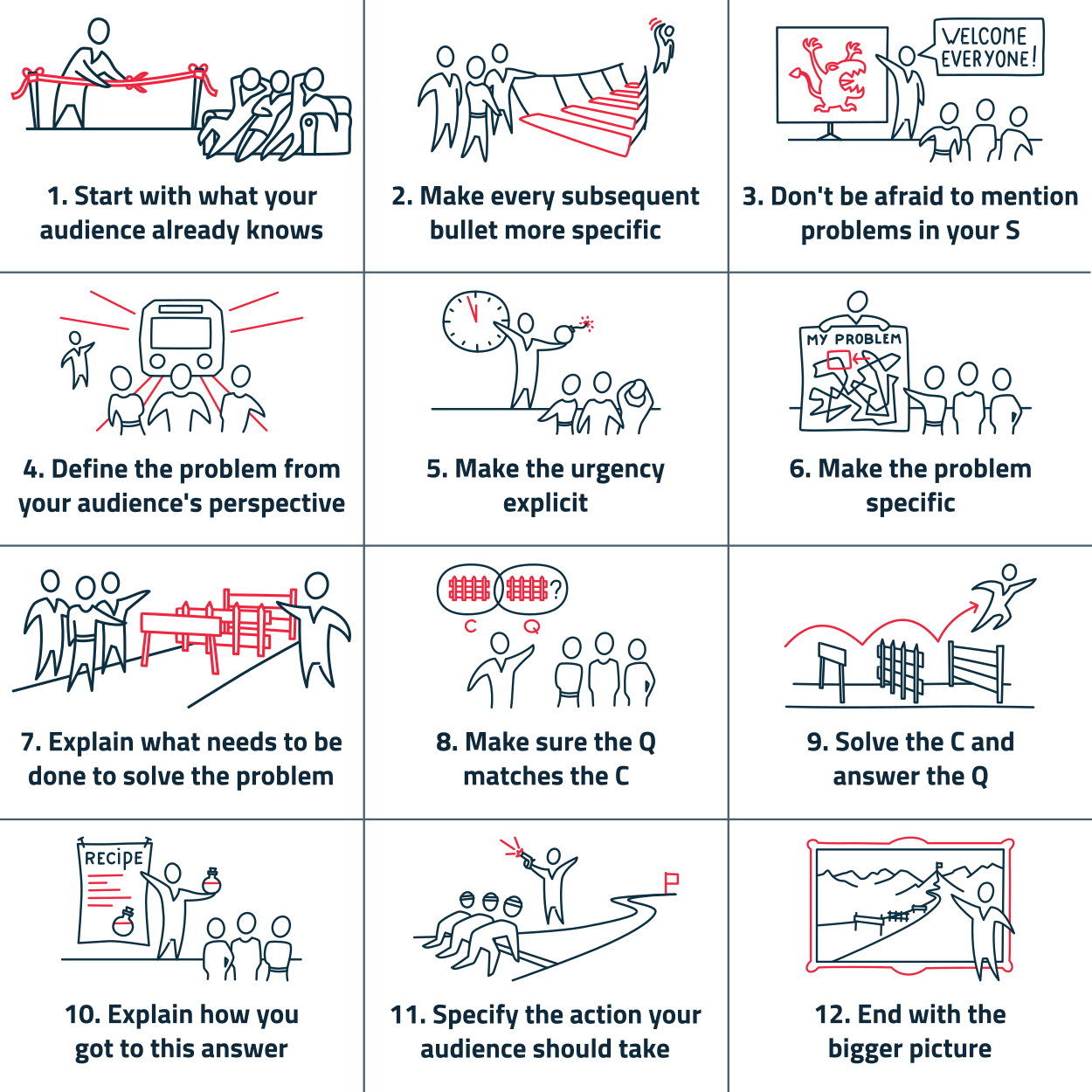
Do’s and don’ts for the Situation (S)
The S is the starting point for your story. Here, you create a common basis, one that you share with your audience. That’s why the S starts with recognizable points that your audience agrees with.
1. Start with what your audience already knows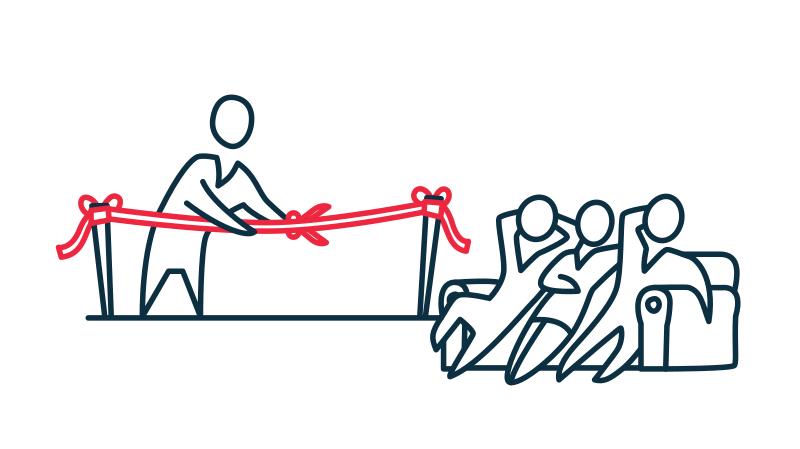
This means that you have to have a clear view of your audience already at the first bullet point, because what is obvious for one audience may be complex and new to another. Take this sentence, for instance:
- There are two types of strokes: ischemic and haemorrhagic.
This starting point is perfectly fine for an audience of medical scientists. But this information is not familiar to everyone. A general audience needs a different starting point. For example, this sentence from the website of the Dutch Heart Foundation:
- When someone has a stroke, something goes wrong in their brain.
You can check whether a sentence is indeed recognizable for your audience by trying if you can start it with ‘As you already know…’. This will sometimes make you realize that an opening sentence that seemed logical is actually not a very familiar starting point. When you are not sure if you chose a good starting point, it is probably a good idea to add one extra, more basic bullet or sentence. People generally overestimate their audience’s knowledge of their own topic.
In the S, you bridge the gap between what your audience knows and the specific topic that you want to discuss. To make sure your audience can follow you, you need to bridge this gap in small steps. How big or small you can make these steps depends on your audience and the complexity of your topic.
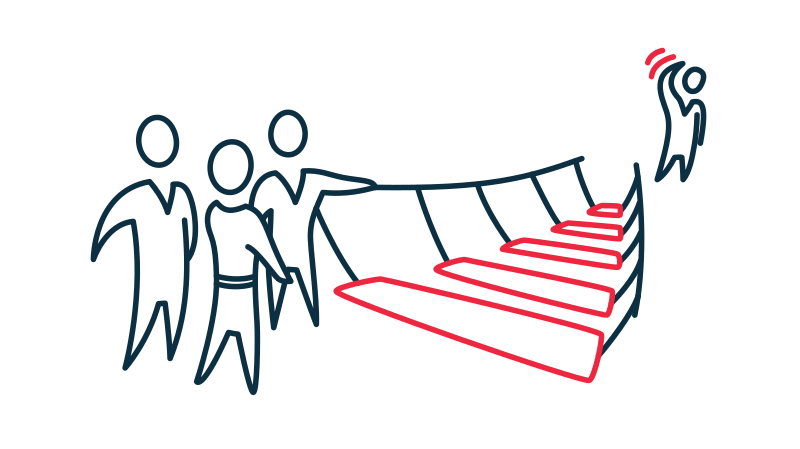
You can think of your story as a funnel. It starts broad at the top, and with every step it becomes more specific, and therefore narrower. An analogy with the zoom function in Google Earth may also be helpful here. You zoom in from the whole world, to a continent, to a country, to a city, et cetera, until you end up in your own back yard.
A good funnel or zoom structure may look like this:
- [Familiar starting point] In the past few years, we have seen a strong increase of the number of refugees arriving in the EU.
- The EU countries of arrival (such as Italy) don’t have enough staff to guarantee proper asylum procedures.
- Because of this, centres where refugees can file a request for asylum are being set up in other countries (such as Turkey and Niger).
- [The topic that the author wants to address] There is debate about the legal status of these centres.
An alternative structure could look something like this:
- In countries outside the EU (such as Turkey and Niger), migrant centres have recently been set up, where refugees can file a request for asylum in EU countries.
- This happened in response to an increased number of refugees arriving in the EU.
- Because of this increased influx, the EU countries of arrival (such as Italy) cannot guarantee a proper asylum procedure for everyone.
- There is debate about the legal status of these centres.
The second version is less smooth. The story has no zoom structure, which forces the author to return to the topic of bullet one in bullet four. As a result, the audience will feel the story is less logical and less ‘clean’.
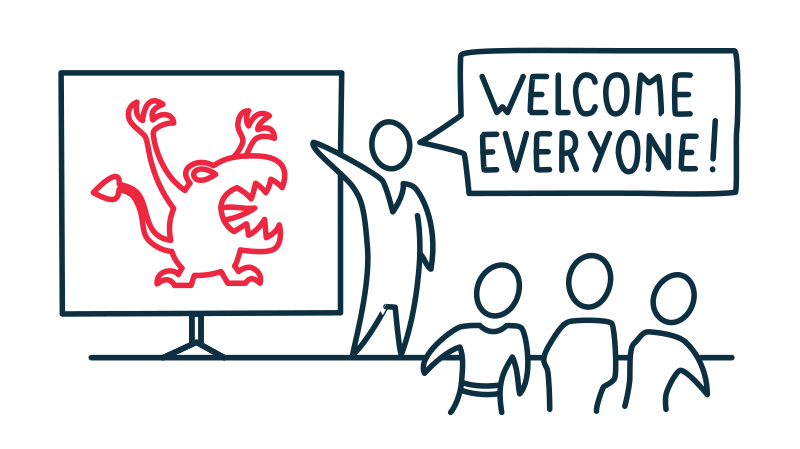
The S is indeed the relatively stable background to the problemsThe Complication doesn’t always need to be a problem. Stories that focus on an opportunity can also be told in an SCQA structure, with the opportunity as the main component of the C. In that case, you also discuss the hurdles to seizing that opportunity in C. that you discuss in C. But problems are often part of this background as well. These are bigger problems that you don’t directly solve yourself, but are nevertheless important as part of the context.
We’ve seen examples of such problems in the storyline about migrant centres outside the EU (see 2.):
- In the past few years, we have seen a strong increase in the number of refugees to the EU.
- The EU countries of arrival (such as Italy) don’t have enough staff to guarantee proper asylum procedures.
The ultimate goal of this storyline is to introduce a new definition of extraterritorial asylum. Therefore, we need to explain in the C that the current definition is problematic. To introduce that specific problem, we also need to discuss the refugee crisis and the failing asylum procedures inside the EU. These are problems too, but they have the status of ‘background problems’.
Other examples of such background problems are global warming and incurable diseases. These will generally not be solved in a single story.
Sometimes it can be unclear whether a problem belongs in the S or in the C. In such cases, there’s not much that can go wrong: both options are fine. You will remove the headings S,C,Q and A anywayIn some cases, you will change the order of the SCQA in your final story. For instance, you can start with the C to emphasize the urgency right away. When you want to play with the order of your SCQA, it is more important to clearly delineate the S and the C. when you write or present your story. Just remember the option to discuss bigger problems in the S.
Do’s and don’ts for the Complication (C)
The C discusses the problem. Why is action needed now? What hurdles need to be overcome to solve this?
4. Define the problem from your audience's perspectiveA story can often be told from various perspectives. For instance, in the story about migrant centres (see 2.), the asylum seekers themselves will experience problems, as will the governments of both EU countries and countries outside the EU (such as Turkey).

If it is possible, it works best to choose the perspective of your audience in your C. By addressing your audience’s problems, you maximize their sense of urgency. By contrast, your story becomes less urgent when you choose your own or your own organisation’s perspective. This happens more often than you might think.
Let’s take as an example an organisation that requests data from companies about their employees and salaries. An email written from the sender’s perspective may look something like this:
- We don’t have enough data for our research into the regional job market. Because of this, we cannot make any reliable statements.
That is a problem. But it is questionable whether the audience would care enough about this to take action, certainly if you are asking them for sensitive data. An alternative, that is formulated from their perspective, probably works better:
- Your company will use the results of this research, to recruit managers and to determine pay scales. Currently, it is impossible to make reliable statements based on our research. This is because there is not enough data available.
In this example it is relatively easy to describe the C from the perspective of the audience, because there is a specific audience (the company) with a clear goal (use the research results). With a broad audience that has no clear goal, this becomes more difficult. In such cases it works best to describe your C from the perspective of society in general. You can discuss problems for citizens, patients, students or consumers.
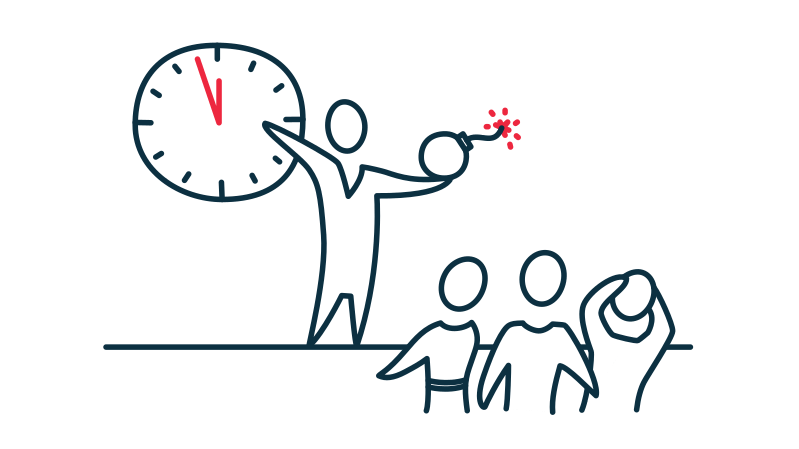
An effective way of making the urgency explicit is by asking yourself ‘so what?’: why is this a problem? That way, you don’t just identify the problem, but also its adverse effects. In the world of sales this is called twisting the knife.
When you do this, the example about strokes (see 1.) may look like this:
- Atherosclerosis
can take place in the carotid arteries, but also in other arteries
that supply blood to the brain.
- So what?
- We
don’t know whether atherosclerosis in these other arteries can
predict ischemic strokes. We also don’t know how atherosclerosis
develops.
- So what?
- As a result, people continue to die from the effects of a stroke, and many others have to live with the adverse consequences of a stroke.
In that last sentence, the urgency is pretty explicit: no one will fail to see that this is problematic.
You will often need to make the urgency more explicit than you think. Knowledge workers regularly forget to emphasize the urgency – because the urgency is evident to them, or because their daily work consists of trying to solve more detailed puzzles, or because they consider ‘not knowing’ (see bullet two above) problematic enough in itself.
While you should emphasize the urgency, you shouldn’t exaggerate. Overselling will harm your credibility and can easily backfire.
A common mistake is creating a C that is too big and too ambitious. For example:
- Ships emit a lot of CO2.
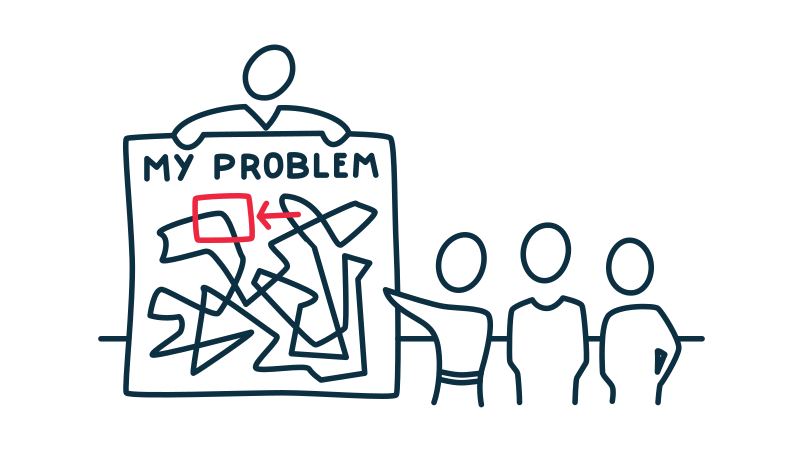
Problems like this one are urgent, but they are most likely background problems (see 3.) which you will not solve directly. It is therefore important to not only mention such big problems, but also zoom in on the specific problems that you are working on. For example:
- There seems to be a promising solution. The frictional drag of ships can be reduced by creating a layer of air around the hulls and adding a coating to the hulls.
- This would result in a significant decrease of the fuel consumption of ships (and therefore their CO2-emissions).
- However, we are not sure if this is practically feasible, what hull designs are suitable, or what coating would work best.
If you don’t make the problem as specific as this, you will create a gap between the C and the A. Your audience will feel like the A only offers a part of the solution: merely coating the ships’ hulls will not solve the entire CO2 emission problem. You can avoid this by formulating a solvable problem in the C.
So when you discuss a problem, you should also discuss possible solutions or a framework for action. You can do this by explaining what needs to be done to solve the problem. What hurdles need to be taken?

When you do that, the example about strokes (see 1. and 5.) may look like this:
- [problem] We don’t know whether atherosclerosis can predict strokes.
- [hurdle] We don’t know how atherosclerosis develops or when it becomes so severe that treatment is required.
- [hurdle] We don’t know what is the best method for measuring atherosclerosis. Each of the two available technologies has disadvantages: MRI is too expensive and CT exposes patients to radiation.
In this way you make the specific problem (see 6.) even more specific. In addition, you also prepare your audience for your A. Identifying hurdles in C results in a clear list of requirements that your A should meet.
Do’s and don’ts for the Question (Q)
The Q asks how the hurdles in C can be overcome.
8. Make sure the Q matches the C
Sometimes people make their Q broader (less specific) than the C, which results in a storyline that is less smooth. For example:
- [C] Our university does not have a Master’s program in digital and online law.
- [Q] How can we address digital trends?
This Q is broader than necessary. There are at least ten ways in which the university can respond to address digital trends. If you discuss only one of them in the A, your audience will experience a gap between the Q and the A.
The opposite also happens: some people make their Q too specific. The result may look like this:
- [C] Our university does not have a Master’s program in digital and online law.
- [Q] How can we create a Master’s program in digital and online law, graduates of which will be valuable to the National Police?
A new term in the Q (in this case, ‘the National Police’) is often a sign that the Q doesn’t match the C. Usually, you can solve this by introducing this new term in the C.
But what does the Q add when you formulate it on the same ‘level’ as the C? Basically nothing, in fact. This is why you will often leave out the Q in a text or presentation. But it still is a good idea to include the Q in your SCQA. Think of the SCQA as a thinking tool that helps you get a grip on your story structure. The Q helps you determine whether all elements in this structure are connected in a logical way.
Do’s and don’ts for the Answer (A)
The A solves the C and answers the Q.
9. Solve the C and answer the Q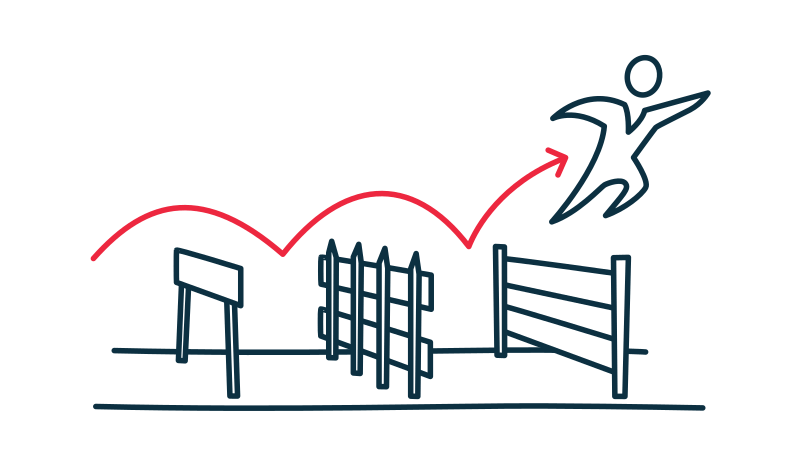
In such an outline, bullet C1 contains a problem, bullet Q1 asks a question about that problem, and bullet A1 answers this question. For example, this is what the outline of the story about our ship hulls example (see 6.) could look like:
C
- The frictional drag of ships can be reduced by creating a layer of air around the hulls and adding a coating to the hulls.
- [C1] However, we don’t know which hull designs are suitable,
- [C2] or what coating would work best.
Q
- [Q1] Which hull designs are suitable,
- [Q2] and what coating would work best,
- …to reduce the frictional drag of ships and decrease their fuel consumption ?
A
- [A1] We tested the new technology on the most common hull designs X, Y and Z:
- [A1a] computer simulations showed that the technology is most effective on ships with hull design X.
- [A1b] These results have been validated in our hydrodynamics lab.
- [A2] We tested various coatings:
- [A2a] We showed that coating A is effective, but sensitive to wear,
- [A2b] while coating B is both effective and durable.
Of course, sometimes one A solves multiple C’s, and sometimes you need several bullets in the A to solve a single C. For this reason it’s smart to make explicit which C bullet is solved where, and where you answer which Q bullet. Your audience should be able to instantly recognize a bullet like A1a as a solution for bullet C1.
If you find a C that is not solved in your A, add the missing information. If that is impossible, you remove this C bullet, or you adapt it so that it can be solved. The latter usually comes down to making the C more specific (see 6.).
You can check your A by matching it to the C and the Q, but you can also do it the other way around. Taking your A as a starting point, you formulate a C and a Q that match that A. This is useful when you already have a clear idea of what your A will be, whether it provides a complete solution or just an action plan. (see 10.)
- [Q] Can we create a layer of air around the hull of a ship?
- [A] We created a layer of air around the hull of the ship.
You can avoid such awkward repetitions by not merely mentioning that the Q is answered and the hurdles are taken, but also discussing how this was done. You can for instance describe the computer and the lab simulations that you have done. This brings your solution to life and adds depth. So in your A you again make your story more specific, much like you did in the S (funnel, see 2.) and in the C (hurdles, see 7.).

When you write a funding application or a project proposal, you don’t have any results yet. But even then you can discuss the how,by describing your methods or your action plan. Actually, this is especially important when you don’t have any results yet, because then you have to convince your audience that there will be results in the future.

If possible, it is best to mention these goals once more in your A. In many cases you can do this by simply mentioning explicitly what the audience should do to solve the C. This can be very practical. For instance:
- To
create a Master’s program in digital and online law, the board
should ultimately before April 1st:
- read the draft plan and give their approval;
- earmark € 20.000 for the design phase and another € 100.000 for the first year;
- designate 3 FTE within the Law Faculty and another 1 FTE from support staff for April, May and June;
- sign and send in an application for accreditation.
Your goals will sometimes be less hands-on than the ones in this example. You may just want to tell your audience something about your research, or inform them about new policy, without asking them to do anything with that information. When you define such goals, ask yourself why exactly you want to communicate. In cases like these it sometimes turns out that communication isn’t necessary at all. But in most cases you’ll eventually find a more action-oriented goal, such as receiving feedback on your research proposal or making a follow-up appointment to discuss possible collaboration. If you clearly identify this goal and mention it in the A, you make your story stronger.
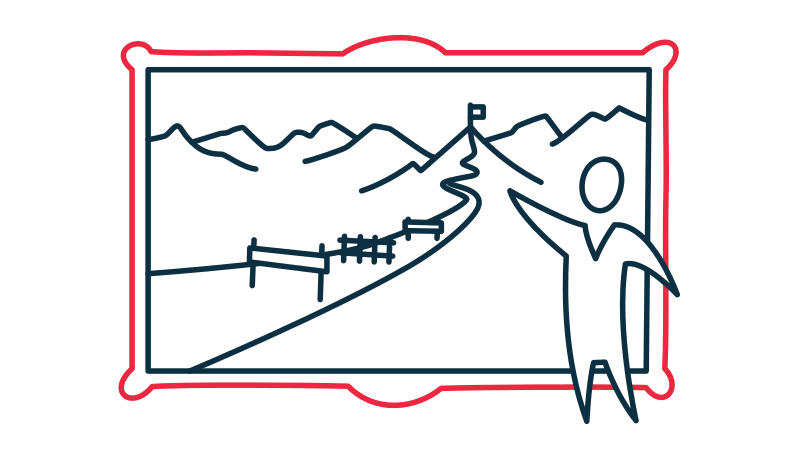
A good way to conclude your story is by zooming back out to the bigger picture. The funnel that narrowed as your story progressed (see 2.) broadens again at the bottom, so to speak. You can do this by reminding your audience of the urgency that you highlighted in the C. Or by returning to the bigger background problems behind this urgency (see 3.). This way, your audience can view all the details that you discussed in your story from the perspective of the bigger picture that you started with.
Often, you’ll zoom out, by asking: ‘Why were we doing this again?’ ‘What have we achieved?’ Or ‘what do we want to achieve?’ ‘What are we able to do now that wasn’t possible before?’ For instance, you emphasize that an important step has been taken on the road to understanding a disease. And that this new knowledge now makes targeted follow-up research possible, where until now we used to be looking for the proverbial needle in a haystack.
Good luck with your story structures!
Structuring a story about a complex topic is and will remain difficult, even for people who do this every day. If you follow these do’s and don’ts, you should be able to take a first step and avoid common mistakes. Good luck with your story structures!
Want to learn more?
We’re building an online SCQA course. Can you help us make this course super useful (in 1 minute)?

Arnaud is trainer, advisor and text writer at Analytic Storytelling. He helps customers to send out a clear and convincing message in both words and images.



